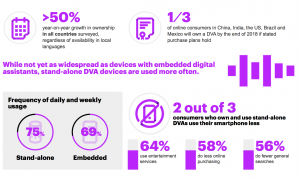One of the great small business marketing enigmas is setting a marketing budget. Many small business owners aren’t sure how to set a marketing budget. How much should I spend on marketing? Taking the “wing it” approach will usually lead to overspending and misallocation. Proper planning, strategizing and budgeting can help alleviate these budgetary challenges and allow you to better track, plan and measure your marketing efforts.
Calculating a marketing budget
Figuring out how much to spend on marketing begins with your annual gross revenue. Experts recommend setting a marketing budget anywhere from 3% to 20% of your gross revenue. That’s a pretty wide range. There are a lot of variables and factors that play into what your marketing budget should be. To determine where you fall on that spectrum you should consider a few things:
Length of time in business
Startups will generally spend more than an established business. Spreading the word about your new business takes more time, effort and money than a company that has been around for 10 years. Startup companies (those younger than 5 years) should plan on spending 12–20% of their annual revenue while more established businesses should spend 6–12%. More conservative marketers might suggest 3–8% for established businesses, but still recommend up to 20% for startups. Also keep in mind that a brand new company has no revenue to base their marketing budget on, so your initial sales forecasts and business strategy will be extremely important in determining what you spend on marketing out of the gate.
Example: An established company that has been in business for 8 years with a gross revenue of $ 500,000 that is in a highly competitive market might set its budget at 10%, or $ 50,000 per year, to be spent on marketing and advertising.
Competition in the marketplace
A highly competitive marketplace will usually require a heftier marketing effort more in line with what a startup would spend. Determine your competition (both direct and indirect), be aware of what they are doing and do it better. Playing a competitive game will require you to become and stay relevant, engage with your customers and stay top of mind.
Industry
The type of business you operate will also determine how much you should spend on marketing. A local coffee shop may not need to spend as much on marketing as an e-commerce apparel company. Your target client demographics and geography will often dictate how much you will need to market. A local business generally has a smaller audience to reach; a national company likely has a much larger audience to reach and in turn, will spend more on marketing.
Planning and tracking your budget
Using a Marketing Budget Template is a great way to lay out your marketing plan, set up a budget, and allow you up to track effectiveness and ROI. Your marketing budget should detail the specific marketing activities you will conduct throughout the year with estimated costs associated with each. Your marketing budget should be one piece of your overall company budget, sales forecasts, and strategy for the year.
Once you’ve established your budget, enter it into Quickbooks or other financial software for easy reporting and budget analysis. It’s easier to stay on track when you shed some light on where you’re at throughout the year. Running a Budget vs Actual report on a regular basis (at least quarterly) is a simple way to ensure that you are staying within your budget parameters and making the necessary adjustments.
Considerations: If there is a seasonality to your business, you will want to consider top-loading your marketing and balancing your off-season with customer engagement marketing to keep you top of mind during the times when actual sales taper. As your season gears back up and positive cash flow improves, ramp up your marketing to drive sales during your peak season.
Incorporating your marketing strategy
Once you have determined what your overall marketing budget will be, your next step is to align your budget with your marketing strategy. Determine what specific marketing campaigns and tasks you want to complete and lay them out according to what you plan on spending. Remember that diversity is always the key to a good marketing strategy. Do what works, but ensure that you are targeting the right customers and engaging across a variety of media to maximize your impact. Using the marketing budget template above will help you identify what you are doing when and how much it will cost. It will also allow you to plan and stay on top of specific tasks for each campaign.
Measure
Measuring the impact of your marketing will provide you with valuable information on the effectiveness of your efforts. Incorporate tracking mechanisms (promo codes, PURLs, and unique landing pages for your website are great for this) so you can measure your ROI. Campaigns with high ROI are likely ones you will want to continue, while those with low ROI might not be worth doing again.
Once you have laid the foundation for your marketing strategy and budget, be sure to review it often, measure, track and refine. While your budget should be followed as closely as possible, a marketing strategy is not something that is set in stone. It should be the foundation for all of your marketing efforts, but should be adjusted with the flow of your business.
Business & Finance Articles on Business 2 Community(37)
Report Post





